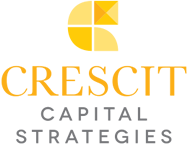What Do Investors Need to Know About the CRE Debt Market Now?

Crescit Capital Strategies and its executive team believe it’s important that investors of all types have a solid grasp of the fundamentals of all investing alternatives, regardless of whether they ever ultimately look to commercial real estate debt or not.
As of late 2017, the amount of debt on U.S. commercial real estate was $3.97 trillion and growing. The Wall Street Journal recently referenced the U.S. CRE debt market as characterized by “low interest rates, strong real estate values and diverse pools of debt capital.” In a survey of 550 institutional investors, The Real Deal noted that 42 percent planned to increase their allocations to private commercial real estate debt. Investors appear to be looking favorably at the potential of debt returns relative to the risk, especially relative to expected commercial real estate equity returns. In other words, the market is liquid and robust.
Borrowers tap the credit markets for new construction, refinancing, restructuring and to repurpose and/or expand existing properties of all types. A wide assortment of lenders including life insurance companies, money center banks, mortgage REITs, government-sponsored entities and specialty finance companies offer commercial real estate borrowers an assortment of debt products, including construction financing, bridge and term loans as well as second-lien or subordinated loans.
Historically, the primary sources of this financing have been banks and other traditional lenders/capital sources. This has begun to change over the last decade, as increased regulation has significantly curtailed the amount, type and level of lending these institutions are able to do. To fill the void, direct private lending platforms have emerged, including specialty one-stop platforms like Crescit Capital Strategies that provide expert services from origination all the way through exit.
For example, Blackstone has recently financed $1.8 billion for construction of the Spiral at Hudson Yards by Tishman Speyer properties, $360 million for CIM Group’s acquisition of 1440 Broadway and originated a $320 million financing for the non-residential portion of the iconic Woolworth building. In 2017, Brookfield arranged a $375 million financing project for 70 Pine Street.
While those financial agreements prominently highlight this private capital trend, transactions of this magnitude do not define the entire market. Middle market transactions of $20 to $80 million, like those that represent the majority of Crescit Capital Strategie lending activity, are at the heart of the industry.
Given the non-homogenous and complex nature of commercial real estate assets, the importance of rigorous and thorough credit analysis at all stages of the commercial real estate lending process should be of paramount importance to investors, regardless of loan size. This requires a seasoned team that possesses experience successfully running horizontally and vertically-integrated business models through multiple credit cycles.
Crescit Capital Strategies is coming to the market with the proven view that prudent and creative financing arrangements can create the best of both worlds: commercial real estate instruments that offer the relatively lower credit risk profile of debt, but simultaneously earn higher returns that would be more commensurate with equity on a risk-adjusted basis. Please be sure to follow us and visit our website to get the latest publicly-available news on our firm and the strategies we’re employing.
